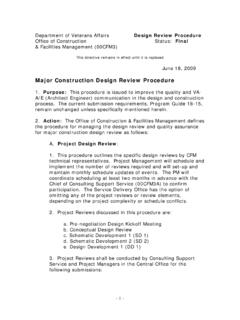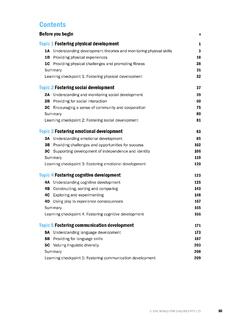Transcription of An introduction to graphic design
1 Unit 1A | Introduction9 12 grade level curriculum | Period: at least four classes, 45 60 minutes in lengthThe graphic design curriculumThe purpose of this curriculum is to: Help train high school teachers to incorporate graphic design into their high school art classes; Introduce graphic design to high school students, help them understand what graphic design is, and how to use high school art teachers are exceptional artists who while well-trained in traditional art media may not feel confident teaching graphic design . This curriculum was created to help bridge this gap, focusing on the similarities between art and graphic design , and reinforce the common foundation of technique, materials, and craft that they share. Though the purposes of fine art and design differ, they are rooted in the same two-dimensional design elements and principles. Starting with these commonalities the curriculum walks both the teacher and student through the design thinking and making curriculum has been built to support a full course on graphic design .
2 With that in mind, it is also meant as a curricular springboard, with plenty of room for customization based on the unique classroom dynamics, access to technology, and needs of each individual art teacher and their particular classroom. Though the intent is for teachers to use the entire curriculum, any unit can stand alone. The curriculum has been created in an effort to be inclusive and therefore does not include the use of specialized technology (hardware or software). These digital tools are important, but not necessary to teach and learn the fundamentals of traditional graphic design and visual communication. Computers and software are important tools necessary to succeed as a professional, yet they are just that tools. If design was merely about organizing text and pictures on a page, machines would have already replaced graphic designers. Beyond simply communicating, graphic designers strive to stimulate intellectual and emotional responses.
3 The role of graphic design is not only to communicate and explain, but to be the catalyst that propels a viewer to a new way of seeing, experiencing, or thinking about the students continue to pursue graphic design in post-secondary education, they will have ample opportunity to learn the necessary and ever changing software; they will not be behind or need to catch up. Students completing this curriculum are likely to have a better grasp and understanding of the design process, which will put them ahead of their peers who focused on technology instead of a National Visual Art StandardsVA:Cr1: Use multiple approaches to begin creative endeavors. : Engage in making a work of design without having a preconceived plan. : Document the process of developing ideas from early stages to fully elaborated Questions Where and how do we encounter images in our world? What is graphic design ?
4 How do designers grow and become accomplished?ObjectivesStudents Generate multiple ideas in the form of thumbnail drawings; Determine which of their ideas are the best; Make roughs; Make a final : existing in thought or as an idea but not having a physical or concrete : uncertainness of : a complete work of art or design , seen in total, not as individual visual design : the final rendering of a graphic idea, short for : refers to the layout of a design , the surface area in which a composition is created and it s boundaries, such as the size of a business card or : a thought or suggestion as to a possible course of action; a concept or mental impression; the aim or : a line is an identifiable path created by a point moving in space. It is one-dimensional and can vary in width, direction, and length. Lines often define the edges of a shape. Lines can be horizontal, vertical, or diagonal, straight or curved, thick or : relating to or characterized by depiction of the physical appearance of things.
5 design is not just what it looks like and feels like. design is how it works. Steve JobsGraphic Design9 12 grade level curriculum | 1A | graphic design | Introductionsolid design foundation. Successful design comes from empathetic, thinking people, not machines and curriculum will give high school students exposure to the design process and design problems as a way of introducing them to visual communication. The curriculum includes: Unit 1: introduction to graphic design Unit 2: 2D design Basics Points, Lines, and Planes; Gestalt Shape, Balance, Rhythm, Unity; Color Unit 3: design Process Define the Problem; Learn; Generate Ideas; design Development; Implementation Unit 4: Typography Typography in Action; The Language of Type; Font Pairing and Hierarchy Unit 5: References; GlossaryThis curriculum has been created with the needs of both students and teachers in mind.
6 Adhering to the National Visual Arts and K 12 curriculum standards, the curriculum is designed not only to be educational for students, but also practical for art teachers to apply in their classrooms, while still meeting current art standards. In addition to visual communication, a core focus of this curriculum is design thinking: a strategic form of creative problem solving that is not limited to graphic design or even art but is being applied to problems as diverse as land use and traffic flow, to agriculture and engineering. While the curriculum has been created to help prepare students interested in pursuing graphic design at the college or university level, its focus is on how people communicate visually and how to utilize design thinking to help students prepare for any occupational or academic field they may introduction to graphic designIn the intro to their documentary The Universal Arts of graphic design , (see Figure 1) PBS Digital Studios describes graphic design thusly: Though often overlooked, graphic design surrounds us: it is the signs we read, the products we buy, and the rooms we inhabit.
7 graphic designers find beauty within limitations, working towards the ultimate goal of visually communicating a message. Utilizing a language of type and imagery, graphic designers try to make every aspect of our lives defined and beautiful. FIGURE 1: The Universal Arts of graphic design ( ), PBS, Digital sketch: a mid-stage development of a graphic idea, often shown to a client for : the form of an object or its external boundary, outline, or external surface, as opposed to other properties such as color, texture, etc. Texture: an interwoven pattern of light and dark tones that imparts a physical quality to a surface rough, smooth, etc. Thumbnail sketch: a small sketched idea, a fast way to generate multiple : present, appearing, or found Black markers Colored pencils Pencils Plain paper (8 " 11") Printouts of the thumbnail and rough templates Sheet protectors and a three ring binder for each student (optional)Figures1.
8 The Universal Arts of graphic Design2. Examples of Assignment 13. Examples of Assignment 2 thumbnail sketches, rough sketches, and final comprehensive design4. Examples of Assignment 35. Examples of Assignment 4 Art Context, Cultural Connections and RelevancyGraphic design is a ubiquitous art form. We are exposed to thousands of ads every day, on TV, billboards, radio, on the web. graphic design is literally everywhere. Personal computers have made it possible for anyone to make their own brochures, signs, and other visual communication. However, many people think that designing something involves using a lot of fancy fonts, finding some clip art, and that s it. design is not decoration, it is problem solving. This curriculum walks students through the design process and gives them lots of practice solving problem in order to grow their skills as graphic Handout Handout 12 grade level curriculum | 1A | graphic design | IntroductionWhile this is a good nutshell description of graphic design , in contemporary society, design has grown beyond only being a means to organize a visually cluttered environment, or to persuade, inform, and organize an audience to meet the needs of business and industry.
9 design has become, as Richard Gref , former Executive Director of AIGA, defined it, the intermediary between information and understanding. Properly applied, effective design design which solves specific problems can influence individual and group behavior, political policy, and even society. While traditionally the term graphic design has referred to two-dimensional surface design the arrangement of text, images, and color to express a message the discipline has evolved to incorporate three-dimensional objects and spaces, and time-based audio/visual experiences. As graphic designers now find work in every field from publishing to entertainment, the sciences to finance, and are incorporating traditional media such as print and television with new and emerging technologies such as smart phones and virtual reality, now more than ever, design education is a lifelong endeavor.
10 By focusing on the visual communicative fundamentals of art and design , in combination with creative thinking and problem solving as opposed to technology, this curriculum aims to prepare students to be lifelong learners able to thrive as the methods of information communication and consumption continue to change. In addition to design studios and advertising agencies, graphic designers also work as in-house talent for companies, for traditional and for new media content creators and publishers, and even as individual entrepreneurs. The practice of design is highly collaborative, and designers frequently work with writers, illustrators, photographers, printers, advertisers, marketers and other brief list of careers in graphic design includes: advertising (promotional) design book design book jacket design brand and identity design corporate communication design editorial design environmental design interactive (experience) design illustration information design motion design package design publication design retail design wayfinding designBeyond these more traditional roles, designers are finding their creative problem solving and communication skills in demand in a growing list of industries, including government and public policy, 9 12 grade level curriculum | 1A | graphic design | Introductioninsurance, health care, architecture, environmental services, and engineering.











